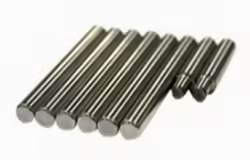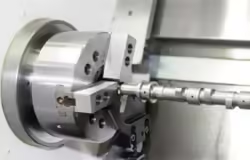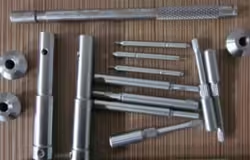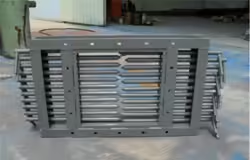
Top 9 Little-Known Q235 Steel Properties
Table of Contents
Introduction
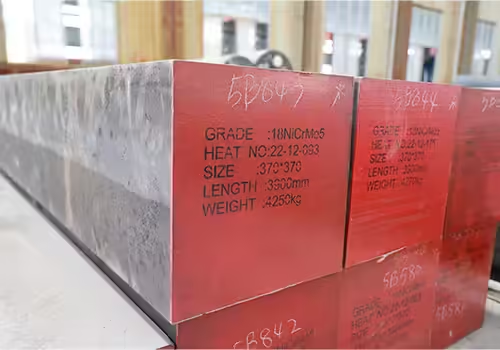
Q235 steel is a widely used structural steel grade in China. Known for its reliable mechanical properties and economic value, it plays a crucial role in various industries such as construction, automotive, machinery, and shipbuilding. Despite its popularity, many of its properties are still underexplored by the general public. This blog aims to shed light on the top 9 little-known Q235 steel properties that may influence your choice of materials for projects.
As a leading high-quality steel manufacturer in China, Henan Jiyuan Iron & Steel (Group) Co., Ltd. has been at the forefront of producing premium-grade steels, including Q235 steel. Established in 1958, the company is recognized as a national high-tech enterprise and ranks among the Top 500 Chinese Enterprises. With a robust infrastructure, an annual production capacity of 5 million tons, and certifications such as ISO9001, ISO14001, and IATF16949, the company delivers top-tier steel products including high-quality steel bars and wire rods.
Mechanical Strength of Q235 Steel Properties
One of the most essential Q235 steel properties is its mechanical strength. With a yield strength of approximately 235 MPa, Q235 can handle substantial loads without permanent deformation. This makes it highly reliable for load-bearing applications in civil engineering, bridge construction, building frameworks, and steel reinforcement.
Yield strength refers to the maximum stress that the material can withstand while still returning to its original shape after the load is removed. This is critical for maintaining structural stability in both static and dynamic environments.
In structural applications, strength is not only about how much force a material can bear but also about how predictably and safely it behaves under stress. Q235 performs admirably in this regard, offering both safety and reliability in high-stress environments.
Tensile Strength and Ductility
In addition to its yield strength, Q235 steel features a tensile strength ranging from 375 to 500 MPa. This refers to the maximum amount of tensile (pulling) stress the material can endure before failure. A tensile strength in this range allows Q235 to be used in components that are subject to stretching, pulling, or bending forces.
Another critical property is ductility, which is the ability of a material to deform under tensile stress without fracturing. Q235 steel typically has an elongation rate of 20% to 26%, meaning it can stretch considerably before breaking. This characteristic is especially valuable in seismic zones or areas subject to vibration and dynamic loads, where a brittle failure could be catastrophic.
High ductility allows the steel to absorb and redistribute stress, making it ideal for applications like:
- Machinery with moving or rotating parts
- Earthquake-resistant structures
- Bridges with heavy traffic loads
Weldability in Q235 Steel Properties
Another little-known but important aspect of Q235 steel properties is its excellent weldability. This makes it easy to join with other metals, enhancing its usability in construction and fabrication work. Q235 steel can be welded using conventional welding methods without the need for special preheating or post-weld heat treatment.
Low Carbon Content Advantage
Q235 steel’s low carbon content contributes to its good weldability. This allows for better control during the welding process, ensuring cleaner and stronger joints. It also helps prevent cracking, which is a common issue in steels with higher carbon content.
Machinability and Fabrication Ease

Machinability is another beneficial property of Q235 steel. The material is easy to cut, drill, and shape, which makes it highly convenient for manufacturing and structural modification. These attributes reduce fabrication time and costs in large-scale production.
Surface Finish and Tool Life
Another benefit of Q235’s relatively soft and uniform composition is its smooth surface finish during machining operations. A smoother finish improves both aesthetics and functionality — especially for parts that require coatings, painting, or surface treatments.
Moreover, the material’s gentle wear on tools helps extend tool life, which is an important factor in mass production environments where tools are a significant cost center. In long production runs, this can lead to substantial savings.
Corrosion Resistance and Treatment Options
While not as corrosion-resistant as stainless steel, Q235 steel properties allow for effective surface treatments such as galvanization and painting. These treatments can significantly improve its resistance to environmental factors, making it suitable for outdoor applications.
Use in Harsh Environments
With proper coating, Q235 steel can perform well in industrial, coastal, and high-humidity environments. Its versatility after treatment makes it adaptable across various sectors.
Table of Key Q235 Steel Properties
Below is a summary of the core Q235 steel properties in table format:
| Property | Typical Value | Notes |
|---|---|---|
| Yield Strength | ~235 MPa | Suitable for structural applications |
| Tensile Strength | 375-500 MPa | Offers good load-bearing capacity |
| Elongation | 20-26% | Indicates good ductility |
| Carbon Content | 0.12-0.20% | Low carbon supports weldability |
| Impact Resistance | Moderate | Can be enhanced with heat treatment |
| Corrosion Resistance | Low | Requires protective coating |
| Weldability | Excellent | No pre/post-treatment needed |
| Machinability | Good | Easy to cut, drill, and shape |
| Density | ~7.85 g/cm^3 | Standard for carbon steel |
Application Flexibility from Q235 Steel Properties
Thanks to the diverse characteristics of Q235 steel properties, it is used across multiple industries. In construction, it forms the backbone of buildings and bridges. In manufacturing, it is used in equipment frames, automotive parts, and storage tanks. Its ability to be shaped, welded, and treated adds to its appeal across these domains.
Compatibility with Other Materials
Q235 steel is compatible with various materials like stainless steel and aluminum when using appropriate joining techniques. This flexibility increases its utility in composite structures and hybrid applications.
Cost-Efficiency Among Carbon Steels
One of the most significant yet understated Q235 steel properties is its cost-efficiency. It offers a balanced trade-off between performance and price, making it a favorite among contractors and engineers.
Availability and Supply Chain Support
Being one of the most produced steels in China, Q235 is readily available. Companies like Henan Jiyuan Iron & Steel (Group) Co., Ltd. ensure a steady supply with their large-scale, technologically advanced production facilities.
Sustainability and Recyclability
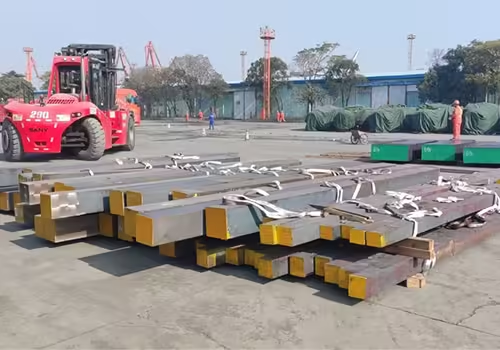
Environmental considerations are increasingly important, and Q235 steel does not disappoint. It is recyclable and contributes to sustainability goals in the construction and manufacturing sectors.
Alignment with Green Initiatives
The production processes at Henan Jiyuan Iron & Steel (Group) Co., Ltd. are designed to meet global environmental standards. This makes their Q235 steel offerings a responsible choice for eco-conscious projects.
Conclusion
Q235 steel properties offer a compelling mix of strength, versatility, and cost-effectiveness. From its mechanical and welding characteristics to its machinability and environmental benefits, this steel grade stands out as a practical choice across industries. Whether you’re building infrastructure, manufacturing machinery, or crafting durable products, Q235 steel provides dependable performance with room for customization.
Henan Jiyuan Iron & Steel (Group) Co., Ltd. continues to set benchmarks in the steel industry with its focus on quality, innovation, and customer satisfaction. With decades of expertise and a robust supply network, the company is a trusted source for high-quality Q235 steel.
FAQ
What is the carbon content of Q235 steel?
Q235 steel typically has a carbon content between 0.12% and 0.20%, which helps enhance its weldability and ductility.
Is Q235 steel suitable for outdoor applications?
Yes, but it requires protective treatments such as galvanization or painting to withstand corrosion.
How does Q235 compare to other carbon steels?
Q235 offers a balanced mix of mechanical properties and affordability, making it more versatile than many other carbon steels.
Can Q235 steel be used in automotive parts?
Absolutely. Its strength, formability, and weldability make it ideal for use in automotive frames and body parts.
Who manufactures reliable Q235 steel in China?
Henan Jiyuan Iron & Steel (Group) Co., Ltd. is one of China’s top manufacturers, offering high-quality Q235 steel products with strong technical support and certifications.
Is Q235 steel recyclable?
Yes, Q235 steel is fully recyclable and contributes to sustainable construction and manufacturing efforts.
What certifications does Q235 steel from Henan Jiyuan Iron & Steel have?
Products are certified under ISO9001, ISO14001, IATF16949, and other standards, ensuring quality and compliance.
How does Q235 steel perform under fatigue loading?
It performs well in cyclic loading conditions, making it reliable for repetitive stress applications like bridges and cranes.
Does Q235 steel support surface treatments?
Yes, it can be galvanized, painted, or coated for extended durability and corrosion protection.
Is Q235 steel a good choice for green building?
Yes, thanks to its recyclability and efficient production, it aligns well with sustainable and green building practices.

